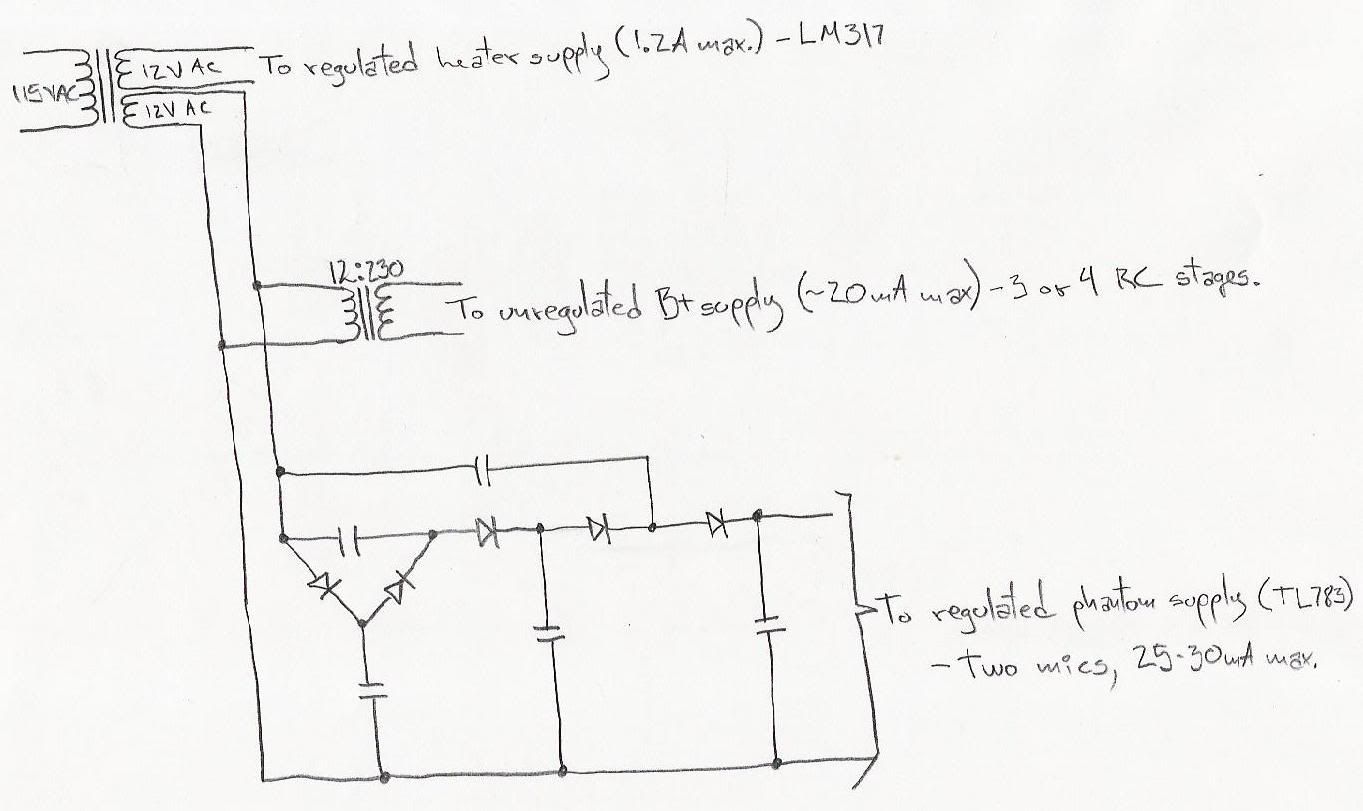Hey guys,
I'm designing a power supply that will power a microphone preamplifier. I need an unregulated high voltage DC output, an LM317-based regulated 12.6V DC output for heaters, and a 48V phantom power output.
I'm going to use a Hammond transformer with a high voltage secondary and a filament secondary. I had thought about using two back-to-back 44V Amvecos, and use the first transformers secondary for both the heater supply and phantom, but I'm going to be pulling up to 1.2A with these heaters, and the Amvecos can't handle that much current...
So my question is this: Is it cool to get phantom power from the unregulated ~300V B+ supply? I was thinking of using another 3 or 4 stages of RC filtering, and then a zener regulator, maybe two 24V zeners in series... What do you think?
Peace,
Al.
I'm designing a power supply that will power a microphone preamplifier. I need an unregulated high voltage DC output, an LM317-based regulated 12.6V DC output for heaters, and a 48V phantom power output.
I'm going to use a Hammond transformer with a high voltage secondary and a filament secondary. I had thought about using two back-to-back 44V Amvecos, and use the first transformers secondary for both the heater supply and phantom, but I'm going to be pulling up to 1.2A with these heaters, and the Amvecos can't handle that much current...
So my question is this: Is it cool to get phantom power from the unregulated ~300V B+ supply? I was thinking of using another 3 or 4 stages of RC filtering, and then a zener regulator, maybe two 24V zeners in series... What do you think?
Peace,
Al.




